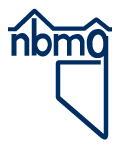Mining Related Contamination
Many mining areas over the years have suffered various forms of contamination from the activities that have occurred there. Types of contamination may include, but are not limited to acid mine drainage, heavy metal contamination and leaching, and erosion.
It is important to note that not all areas of potential mercury contamination, acid mine drainage, or mine related contamination in the State have been studied or even identified. If a person has concerns about a particular site, then they should hire a consulting geologist or an engineering firm to do a study. It is also important to note that a person may be held liable for the clean-up of any land they acquire or stake that has an mine related contamination problem.
Acid Mine Drainage
Acid mine drainage occurs when sulfide minerals such as pyrite within the rock is exposed and weathered. This results in the formation of sulfuric acid and the lowering of the pH in water that seeps
into the mine and may eventually drain out. Water seeping through the rock may also become
contaminated by leaching out metals and other minerals such as arsenic, copper, and lead.
The Leviathan Mine is an example of this happening on a large scale at an abandoned sulfur mine. The mine in Sections 15 and 22, T10N, R21E in Alpine County, California, was operated as an open-pit sulfur mine by the Anaconda Co. from 1953 to 1962. The sulfur was used to make sulfuric acid used in leaching secondary or oxide copper ore at Anaconda's copper mine near Yerington, Nevada. Since its closing, the Leviathan Mine has been the site of acid mine drainage into the local creeks that feed into the East Fork of the Carson River and eventually into Nevada. The Leviathan Mine is a Superfund Site.
NBMG Open-File Report 95-4, Water Quality at Inactive and Abandoned Mines in Nevada, reports a study of the water in 12 pits and 72 abandoned mines around the State. It is available from the NBMG Publication Sales Office and is free on the website. Also, the USGS has a large number of general and site specific publications dealing with acid mine drainage and other mining related contamination issues.
Mercury Contamination
Before the invention of the cyanide heap leaching method of extracting gold from ore in the
1890s, the mercury amalgamation method was used. With mercury amalgamation, crushed gold
and silver ore was mixed with liquid mercury. The mercury leached the gold and silver out into a
sometimes doughy solution called amalgam. The amalgam was commonly heated in retorts to
vaporize the mercury and leave the gold and silver behind. Mercury was sometimes recycled
through the process and sometimes not. However, in the 19th century, both the apparatus and
the process was "leaky" even when the mercury was carefully recycled. Steam engines to run
milling machinery were expensive to acquire and maintain, so many if not most of the mills using
the mercury amalgamation method were located along streams and rivers to take advantage of
cheap water power. This has resulted mercury contamination in the soils and watersheds of
some areas of the state.
The worst area for mercury contamination is the Carson River downstream of New Empire and the main drainages such as Six Mile Canyon and Gold Canyon leading into it. During the Comstock Era (1859-1880), about 7 million pounds of mercury are believed to have been lost through this drainage area, most of which went out into the Carson Sink. This is considered a Superfund Site. NBMG studied the Carson River and has reports available on our website. The USGS has both general and specific site information on mercury contamination.

 Home
Home